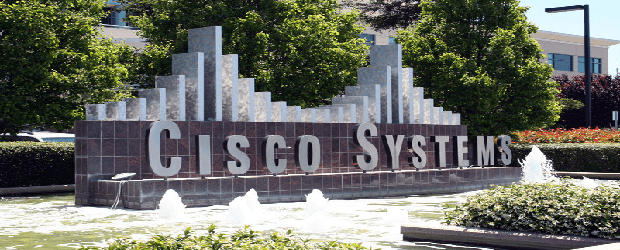After being fierce rivals in the data centre market, Cisco Systems and IBM are partners again.
The two technology powers announced a joint integrated infrastructure solution called VersaStack which combines the Cisco Unified Computing System, the company’s existing x86 architecture data centre server platform with IBM’s Storewize V7000 storage system to form a new Cisco Validated Design (CVD). The new VersaStack solution will only be available through channel partners.
This announcement follows Cisco’s recent decision to reduce its ownership stack in VCE to just 10 per cent. According to various sources at the vendor and in the channel community, the networking giant is squarely targeting EMC with VersaStack.
But while Cisco’s has EMC in the crosshairs, the Hopkinton, Mass.-based vendor will not be the only competitor for VersaStack. Damian Sergeant, general manager of data centre practice for Cisco Canada, told CDN that with IBM selling off its x86 business to Lenovo, Cisco saw a great opportunity to partner with Big Blue. The companies were finally able to announce their plans now that the servers – including the sales people and technical resources – had been officially signed over. It was only two months ago that Lenovo officially close its $2.1 billion deal with Big Blue for the x86 business.
“Over last four years, we have been selling alongside IBM, which included IBM storage, but there was no true Cisco Validated Design or integrated stack between both companies that we would support,” Sergeant said.
With many former IBM x86 channel partners still transitioning from the Lenovo deal, Sergeant believes this may be a market that the new Cisco-IBM partnership intends to recapture.
“For a channel partner before who sold IBM System x and potentially V7000, now they’re looking for alternatives,” Sergeant said. He explained that, because of the size of the System x market, not only will Lenovo be going after it, but also HP and Dell.
According to Laura Guio, vice president of business line executive storage systems at IBM, both Cisco and IBM will be offering services for channel partners “whether it’s directly with the client to take services to IBM or Cisco, or a hybrid approach where our channel partners offer those services to their customers and in turn we back with services.”
With Cisco and IBM collaborating on sales and marketing for the solution in Canada, the two companies are working closely to determine where to push the solution. Among the early efforts, Cisco will be talking about the announcements extensively during its UCS Mini road show this month, Sergeant said.
“In Canada it’s really going to change how we market with IBM,” he said. “I see tremendous upside opportunity for both organizations here.”
Among key advantages that VersaStack aims to offer, Cisco highlighted efficiency, simplified management through having one single pane of glass for the entire computing environment, and in some instances, even a reduced physical footprint.
“Virtualization is one of those key things that I think as a client tries to pull together their IT data centre, this then accentuates some of the value proposition in IBM storage and what it brings to the overall solutions,” Guio said.
Depending on the client’s existing infrastructure, VersaStack can also either be brought in through a simple insertion or be built from scratch the same way it is currently done for Cisco’s Vblock, VCE and NetApp’s FlexPod offerings, according to Sergeant, and all at an increase of 30 per cent in speed to market.
“For customers that have deployed converged infrastructure before, it’s not uncommon for them to say that what took five people before to manage a complete stack now takes one,” he told CDN. “It makes sense for [the customer] so they can have operational efficiency across their complete stack but then support with one number whether it be IBM Global Services, or whether they look for combined support between IBM and Cisco.”
While Cisco is banking on integrated infrastructure to grow, it has figures to back up its bet. An IDC report released in March projected worldwide spending on integrated systems to grow at a 32.8 per cent annually, and would reach $14.37 billion in 2017.
Meanwhile, Sergeant says, already more than half of data centre sales he sees, which include UCS, is tied into converged infrastructure.
“I expect that growth to increase with the VersaStack offering,” he said.





